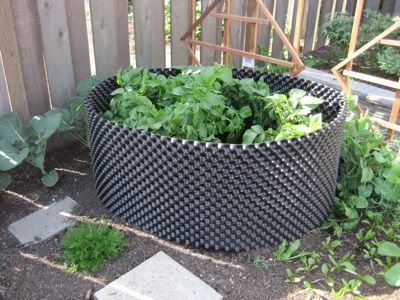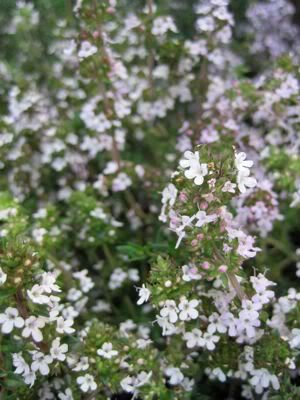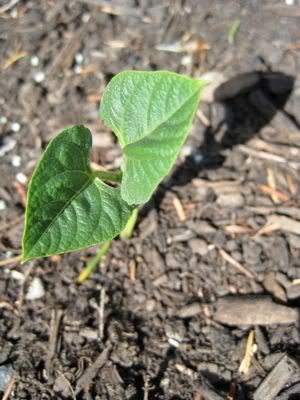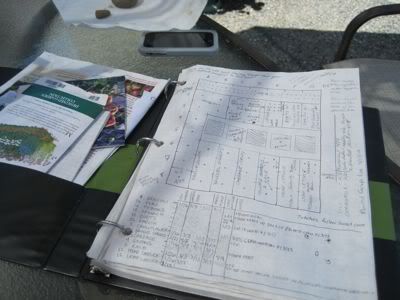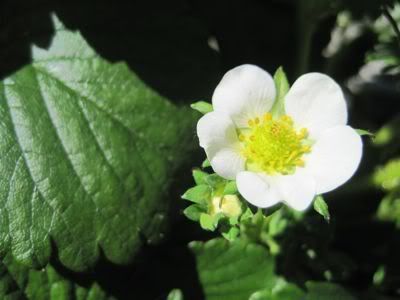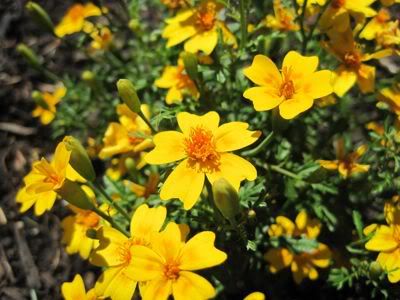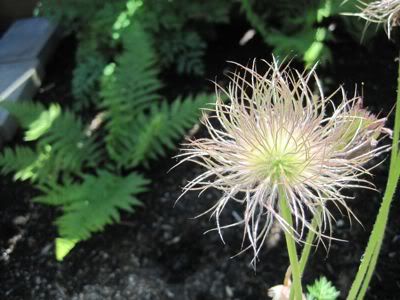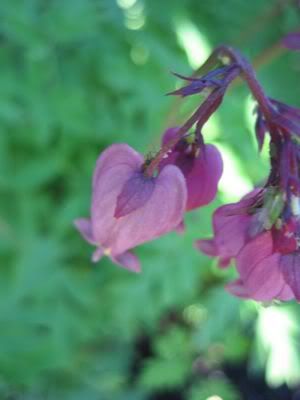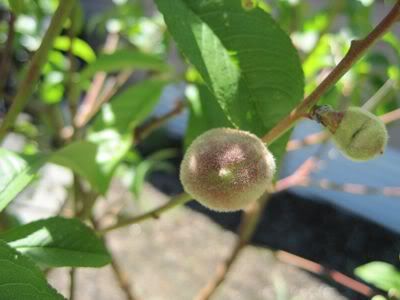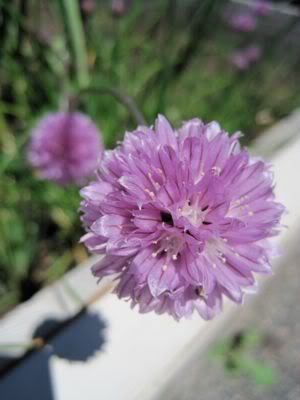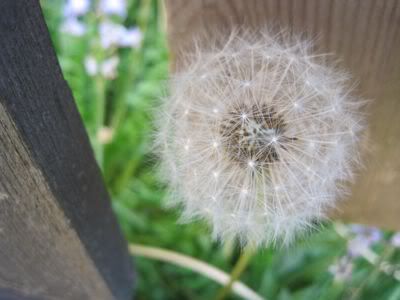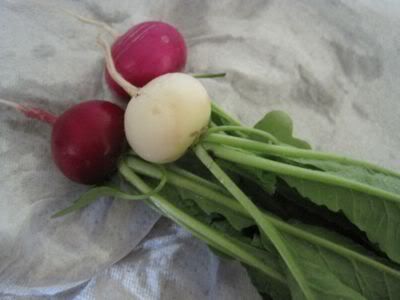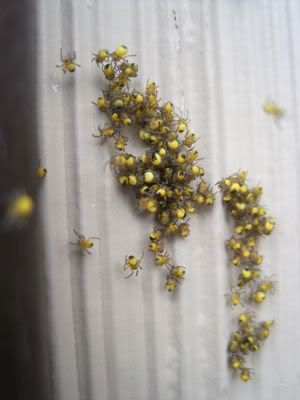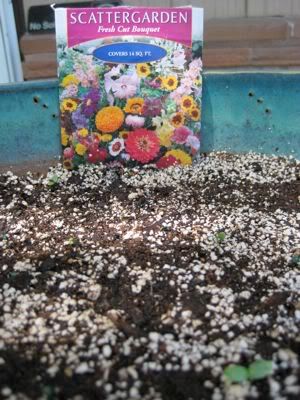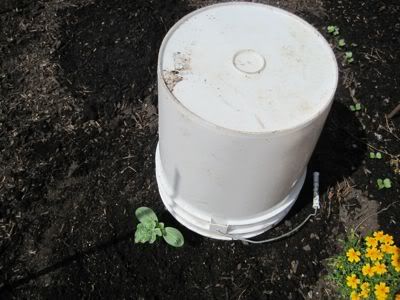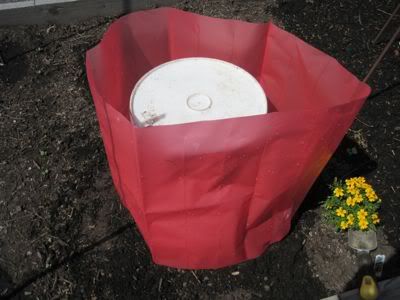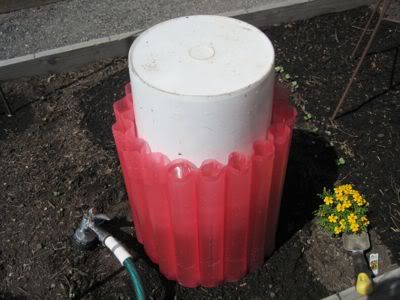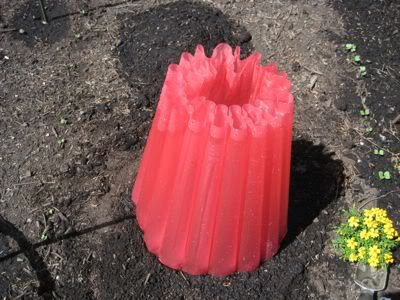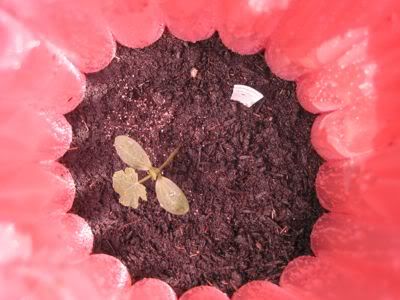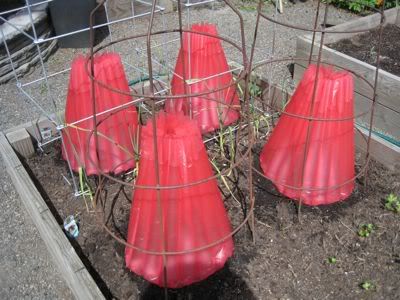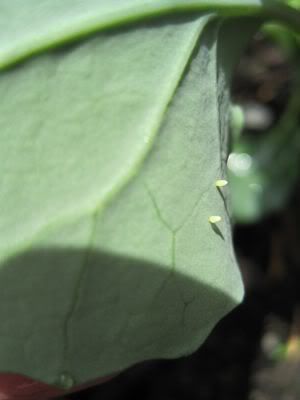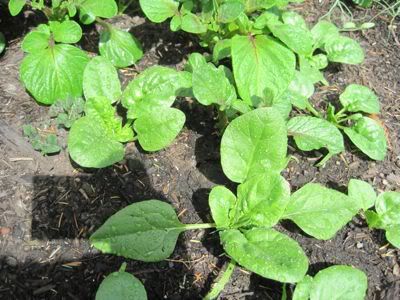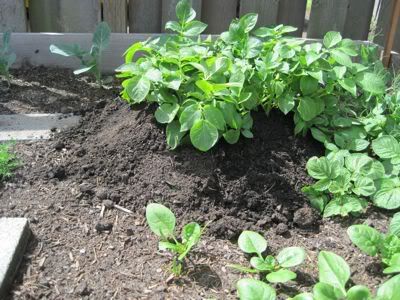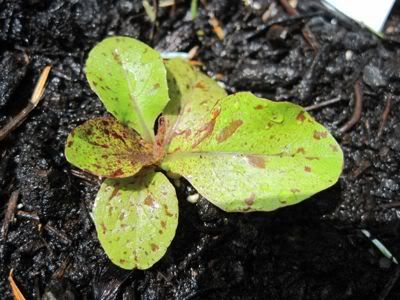It's fungualed, nibbled, has a split stem and in general looks like it's about to croak. I think I'll have to start a new one from seed and hope it isn't too late to get a harvest.
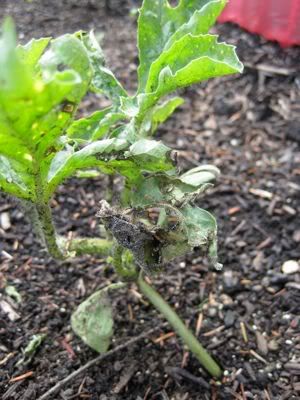
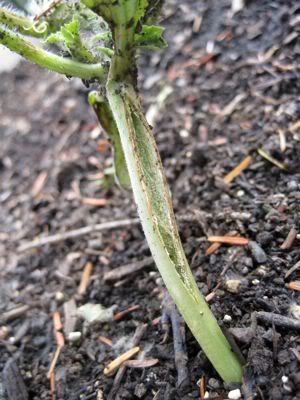
One Mud Monkey's Adventure in Organic Gardening
“Gardening is the art that uses flowers and plants as paint, and the soil and sky as canvas.”
-Elizabeth Murray


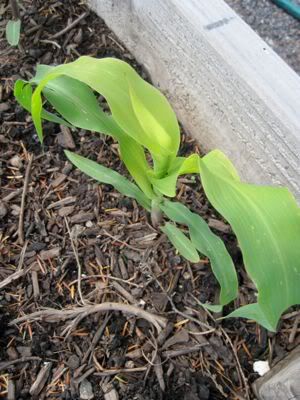
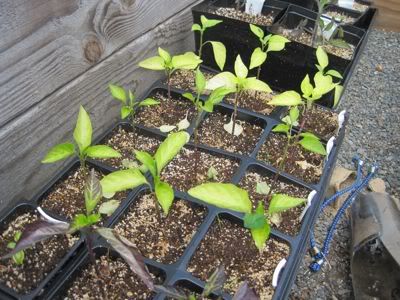
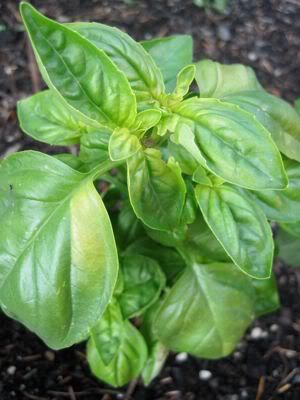
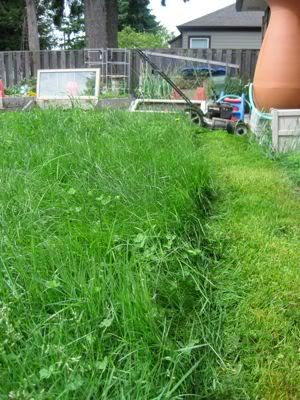
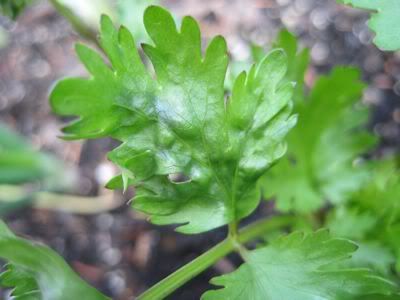
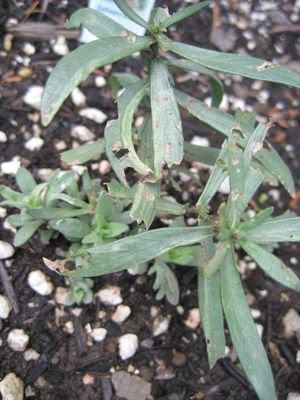
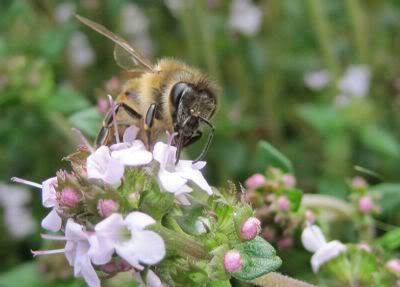
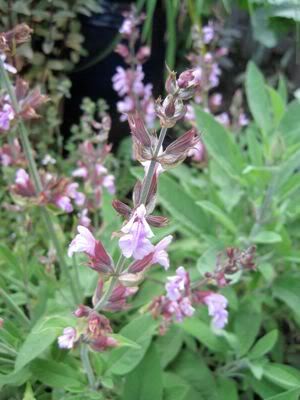
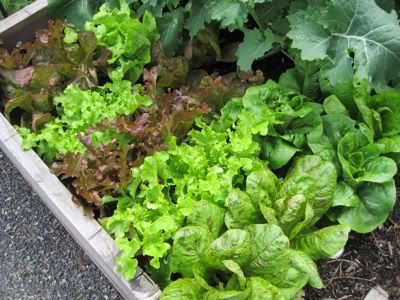

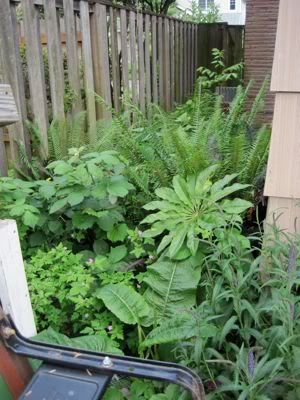
...UNSEASONABLE COOL WEATHER BLANKETS THE PACIFIC NORTHWEST...
AN UNSEASONABLY COLD UPPER LEVEL TROUGH OVER THE AREA RESULTED IN A
A FEW RECORD COLD MAXIMUM TEMPERATURES ACROSS NORTHWEST OREGON AND
SOUTHWEST WASHINGTON SO FAR TODAY.
NEW OLD
LOCATION RECORD RECORD
--------------------------------------------------------------------
PORTLAND AIRPORT 50 52 1950
...RECORD DAILY MAXIMUM RAINFALL SET AT SALEM OR...
A RECORD RAINFALL OF 0.96 INCH(ES) WAS SET AT SALEM OR YESTERDAY.
THIS BREAKS THE OLD RECORD OF 0.81 SET IN 1996.(This is just south of where we live)
Oh Summer where are you?!
Haitian Farmers Commit to Burning Monsanto's Hybrid Seeds
"A new earthquake" is what peasant farmer leader Chavannes Jean-Baptiste of the Peasant Movement of Papay (MPP) called the news that Monsanto will be donating 60,000 seed sacks (475 tons) of hybrid corn seeds and vegetable seeds, some of them treated with highly toxic pesticides. The MPP has committed to burning Monsanto's seeds, and has called for a march to protest the corporation's presence in Haiti on June 4, for World Environment Day.In an open letter sent of May 14, Chavannes Jean-Baptiste, the Executive Director of MPP and the spokesperson for the National Peasant Movement of the Congress of Papay (MPNKP), called the entry of Monsanto seeds into Haiti, "...a very strong attack on small agriculture, on farmers, on biodiversity, on Creole seeds , and on what is left our environment in Haiti." Haitian social movements have been vocal in their opposition to agribusiness imports of seeds and food, which undermines local production with local seed stocks. They have expressed special concern about the import of genetically modified organisms (GMOs).
For now, without a law regulating the use of GMOs in Haiti, the Ministry of Agriculture rejected Monsanto's offer of Roundup Ready GMO seeds. In an email exchange, a Monsanto representative assured the Ministry of Agriculture that the seeds being donated are not GMO.
Elizabeth Vancil, Monsanto's Director of Development Initiatives, called the news that the Haitian Ministry of Agriculture approved the donation "a fabulous Easter gift" in an April email. Monsanto is known for aggressively pushing seeds, especially GMO seeds, in both the global North and South, including through highly restrictive technology agreements with farmers who are not always made fully aware of what they are signing. According to interviews by this writer with representatives of Mexican small farmer organizations, they then find themselves forced to buy Monsanto seeds each year, under conditions they find onerous and at costs they sometimes cannot afford.
The hybrid corn seeds Monsanto has donated to Haiti are treated with the fungicide Maxim XO, and the calypso tomato seeds are treated with thiram. Thiram belongs to a highly toxic class of chemicals called ethylene bisdithiocarbamates (EBDCs). Results of tests of EBDCs on mice and rats caused concern to the U.S. Environmental Protection Agency (EPA), which then ordered a special review. The EPA determined that EBDC-treated plants are so dangerous to agricultural workers that they must wear special protective clothing when handling them. Pesticides containing thiram must contain a special warning label, the EPA ruled. The EPA also barred marketing of the chemicals for many home garden products, because it assumes that most gardeners do not have adequately protective clothing. Monsanto's passing mention of thiram to Ministry of Agriculture officials in an email contained no explanation of the dangers, nor any offer of special clothing or training for those who will be farming with the toxic seeds.
 Greater bulb fly - Merodon equestris
Greater bulb fly - Merodon equestrisThis widespread and common hoverfly is a bumblebee mimic, taking on different colour forms to match various bumble bees. It is characterised by the strong projection on the hind femur, which gives it a thickened appearance.
In spring, the males are seen flying low and hovering over short grass looking for a female. She lays eggs near bulbs, especially wild bluebells and daffodils, and larvae then enter and feed on the bulb. The adults may be seen in a greenhouse from February and outdoors from April to August.
The adults feed on pollen and nectar of spring flowers, especially dandelion. The larvae burrow into bulbs of bluebells and other plants.
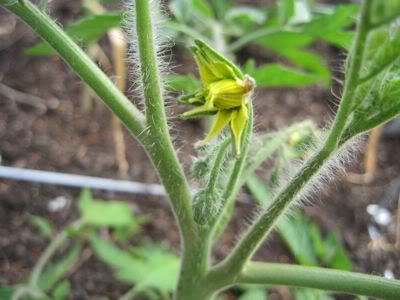
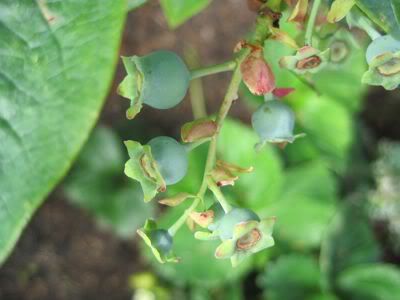
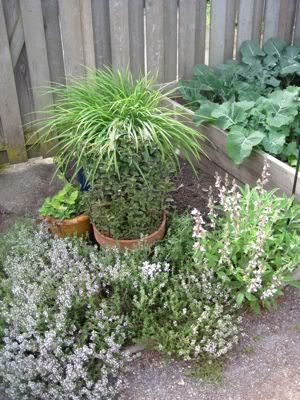
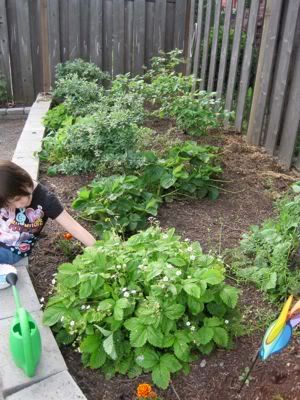
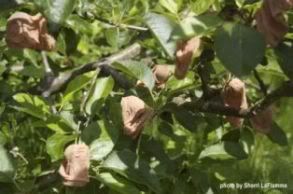
The results are in; Nylon Footies are 100% effective against apple maggots & 96-98% effective against coddling moths. The environmentally effective way to protect your fruit without spraying is easy to apply. The key to the effective barrier is time of application. Nylon Footies must be applied BEFORE the codling moth emerges in early spring. Apple maggot fruit fly emerges after the codling moth.
Easy to Apply
I was an advocate of paper bagging fruit. I now advocate use of nylon footies because they are just as effective but much easier to apply. I apply the footie when fruit thinning for apples within 40 days of petal fall to help eliminate alternate bearing by sliding the footie over my little finger and bunching the nylon so that at least half of the length of the footie slides up the fruit. I make sure the top of the nylon covers the stem. That's it, no tying the nylon to the fruit stem or branch. Footies also work well on short fruit stemmed varieties, whereas, paper bags do not.
When thinning fruit, it is the general rule not to have two fruits on one spur because they will touch each other. If two fruits touch each other most of the time the coddling moth larva will enter where they touch. I placed nylon footies on 6 pairs of fruit that touched each other to see if they would become wormy. Results: not one of the six pairs of fruit had coddling moth or apple maggot.
Re-useable?
Nylon Footies stretch as the fruit grows. When removed from the fruit it is still stretched. One HOS member has washed stretched nylon footies and said they shrunk to their original size. I have hand washed about 200 used nylon footies and dried them is a dryer and all shrunk but a few (>5%) still had a slightly larger opening than non-used nylon Footies. It appears and we will know next season if they will stay on the fruit.
Cost
HOS is now selling them on this website. See the Fruit Footies page for details.
